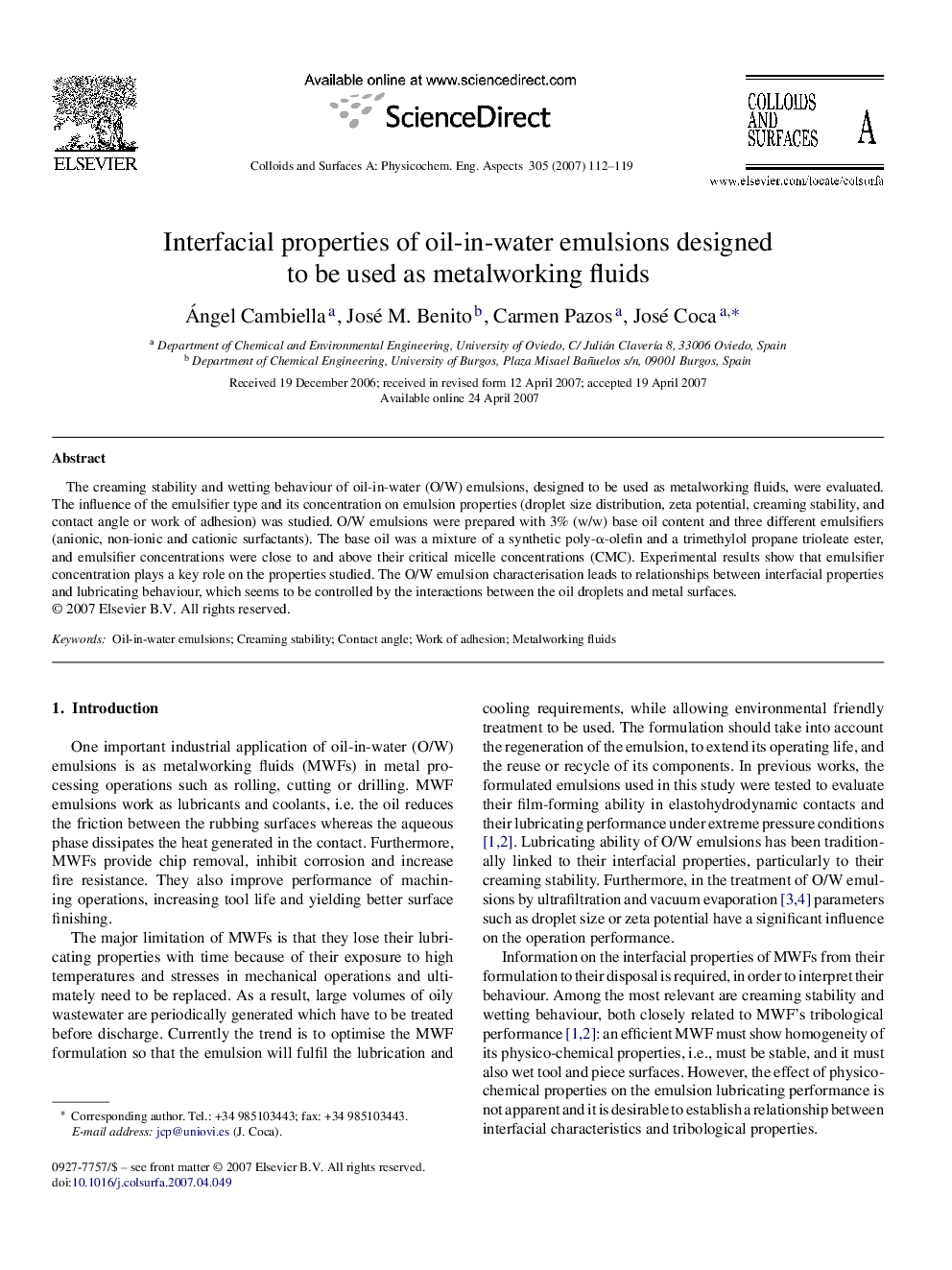| Article ID | Journal | Published Year | Pages | File Type |
|---|---|---|---|---|
| 597471 | Colloids and Surfaces A: Physicochemical and Engineering Aspects | 2007 | 8 Pages |
The creaming stability and wetting behaviour of oil-in-water (O/W) emulsions, designed to be used as metalworking fluids, were evaluated. The influence of the emulsifier type and its concentration on emulsion properties (droplet size distribution, zeta potential, creaming stability, and contact angle or work of adhesion) was studied. O/W emulsions were prepared with 3% (w/w) base oil content and three different emulsifiers (anionic, non-ionic and cationic surfactants). The base oil was a mixture of a synthetic poly-α-olefin and a trimethylol propane trioleate ester, and emulsifier concentrations were close to and above their critical micelle concentrations (CMC). Experimental results show that emulsifier concentration plays a key role on the properties studied. The O/W emulsion characterisation leads to relationships between interfacial properties and lubricating behaviour, which seems to be controlled by the interactions between the oil droplets and metal surfaces.
